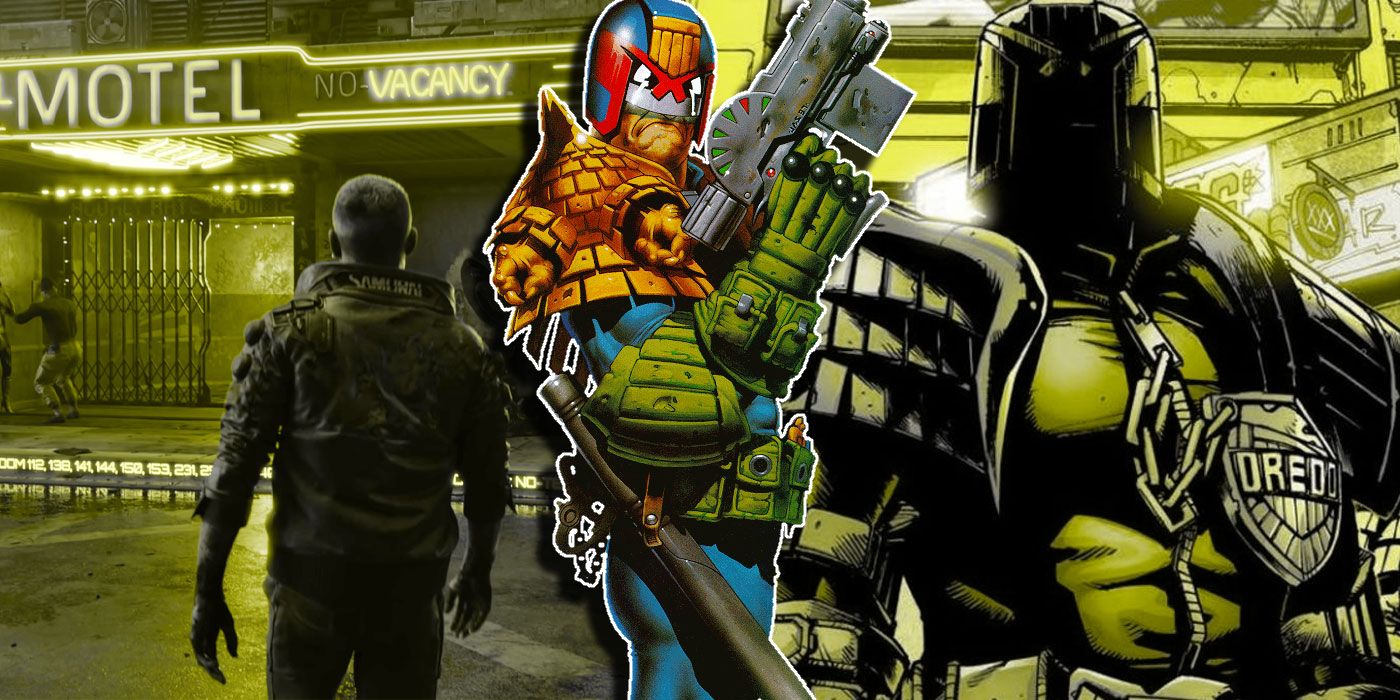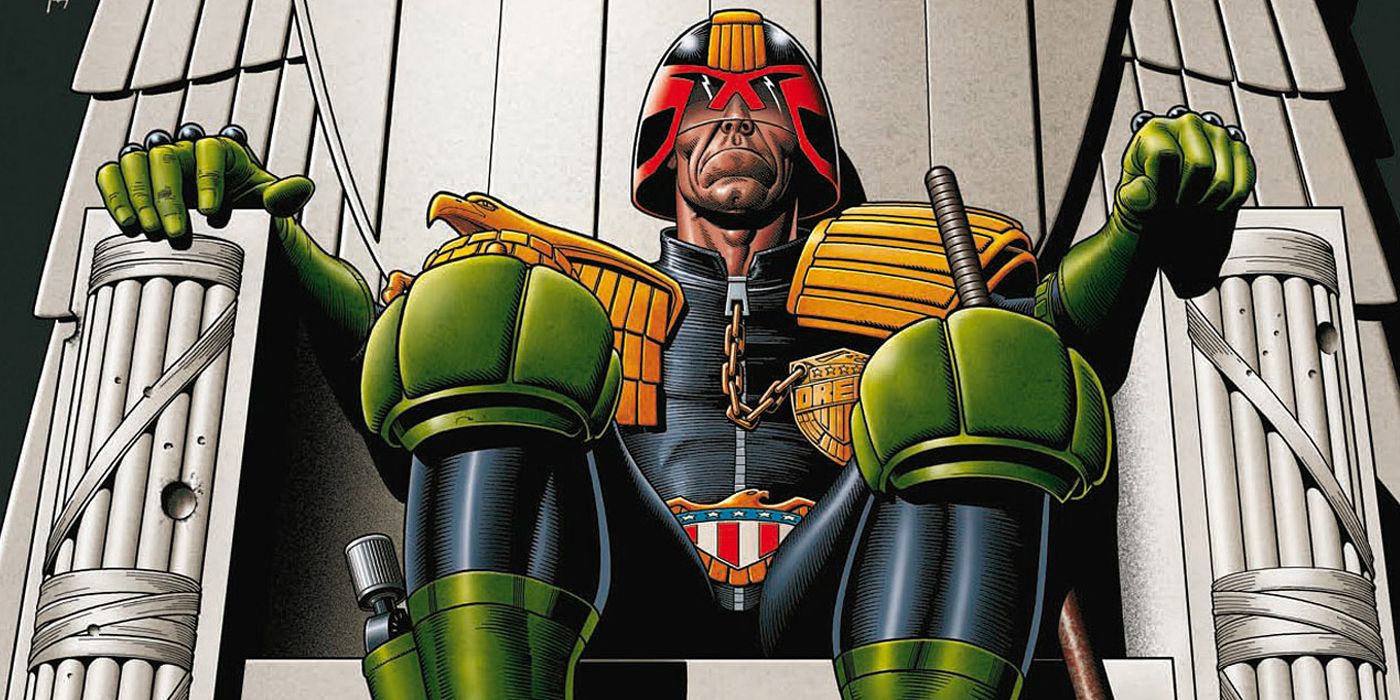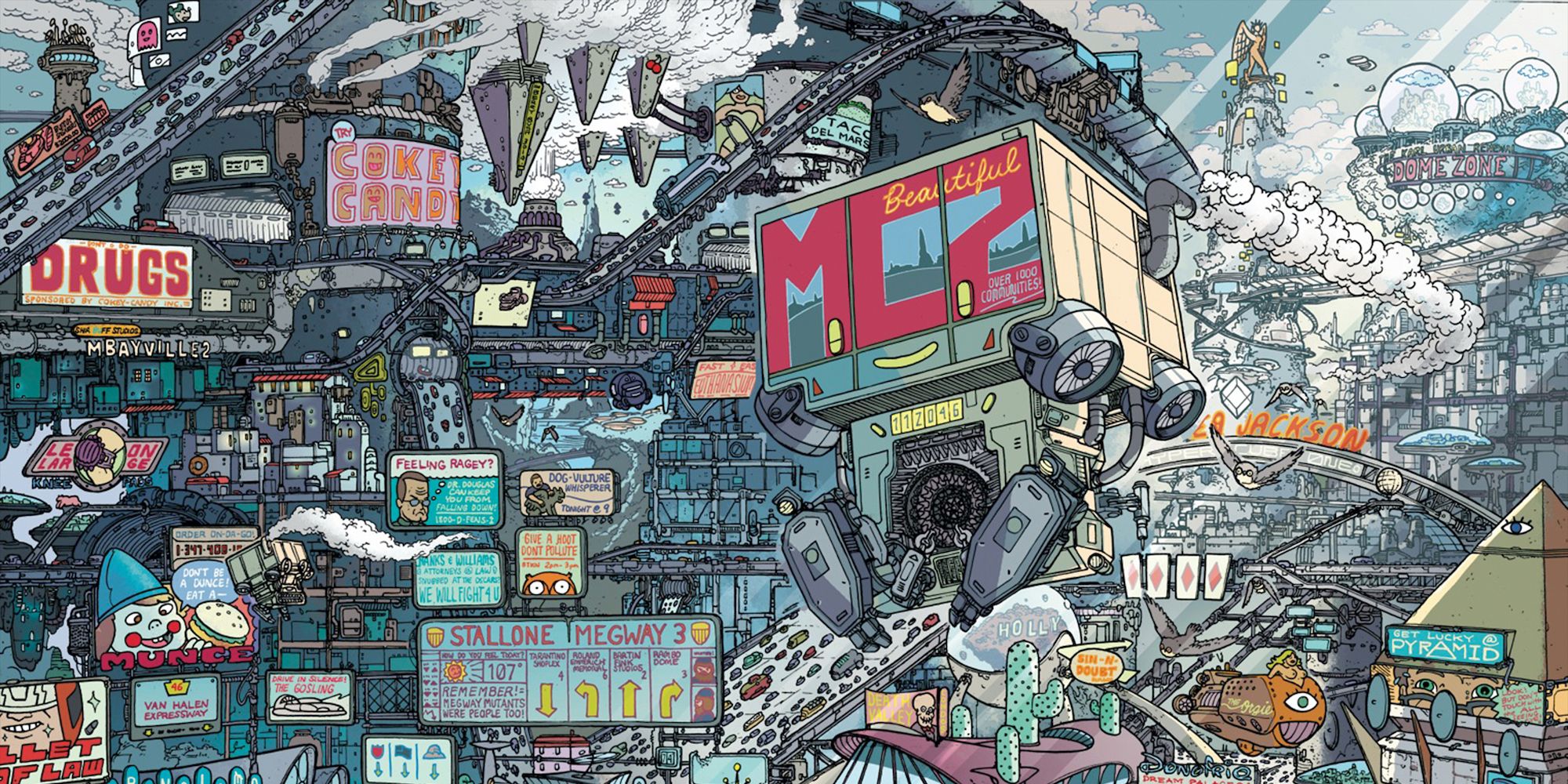With the release of Cyberpunk 2077, it feels like the perfect time to look back at one of the classic dystopian sci-fi characters who helped make way for the entire cyberpunk genre--none other than 2000 AD's future lawman Judge Dredd.
Created by Pat Mills, John Wagner and Carlos Ezquerra, Dredd enforces law and order in the streets of Mega-City One. He is a brutally fascistic antihero who is committed to enforcing the will of his superiors through the use of extreme force. In many ways, he seems like the polar opposite of a cyberpunk protagonist, yet he helped usher in the genre.
For further context, one needs to understand the origins of cyberpunk. After the popularity of Star Wars, the next several years saw space operas consume every corner of sci-fi. The 1982 film Blade Runner (which adapted a 1968 novel by Philip K. Dick) and the 1983 novel Neuromancer are credited with breaking this trend by creating cyberpunk --a new sci-fi genre starring antisocial rebels who lived on the brink of society, using hacking and other skills to survive in their fights against AI and futuristic machines. These stories' cities were set against a backdrop of overpopulation and jarring economic inequality with heroes who stood up to corrupt authority in urban dystopias.
Judge Dredd debuted in March 1977's 2000 AD #2--released just two months before the theatrical release of Star Wars: A New Hope. From the very first story, Dredd is defined by his setting--a massive futuristic city whose sprawling highways, high-tech vehicles and grimy criminal gangs set the scene. In fact, the first story begins with the words "New York 2099 A.D.!"--not all that different from a setting like Cyberpunk 2077. These elements continued to develop when the rest of the world was making Star Wars knockoffs.
Dredd's stories often featured robots, computerized security measures and high-tech vehicles. Androids whose sentience makes them fear death and suffering is a cyberpunk trope often traced to Blade Runner, but a robot named George explores these same themes in the first year of the comic when his master orders him to commit suicide.
The filth and grime of the sprawling Mega-City One (of which New York is just a small neighborhood) contains all manner of poor people whose loud-mouthed complaints and criminal hijinks give Dredd cause for grief as he is forced to bring them in. Some of these are villains or mere comic relief. Others are the heroes of their own stories, such as Chopper, a young man who engages in illegal graffiti art and skysurfing races. While such characters are criminals who the Judges must stop, they are essentially the slum-dwelling grifters and countercultural rebels who star in most cyberpunk stories.
There is a portable computer in Dredd's motorcycle that can access the personal files of Mega-City citizens. His world contains handheld lie-detectors, face-switching machines and aerosol smart plastics. These give Dredd's comics a proto-cyberpunk aesthetic. Technology interfaces with overpopulation, crime and poverty to create complex sociological stories one issue, over-the-top comedic thrillers the next and dark dystopian tragedies after that. In some stories, Dredd is clearly the villain, inflicting needless suffering, as in Judge Dredd: America.
Cyberpunk 2077 is the spiritual descendant of Dredd's Mega-City One. The protagonist of Cyberpunk, V, is a mercenary--which is basically just a freelance Judge. The gun that Judges wield, called a Lawgiver, even looks similar to the handgun on the box of the game. To fully appreciate Cyberpunk 2077, you should dive into the world of Mega-City One in the year 2099.
Developed by CD Projekt Red, Cyberpunk 2077 arrives on PlayStation 4, Xbox One, PlayStation 5, Xbox Series X|S, Google Stadia and PC Dec. 10.



